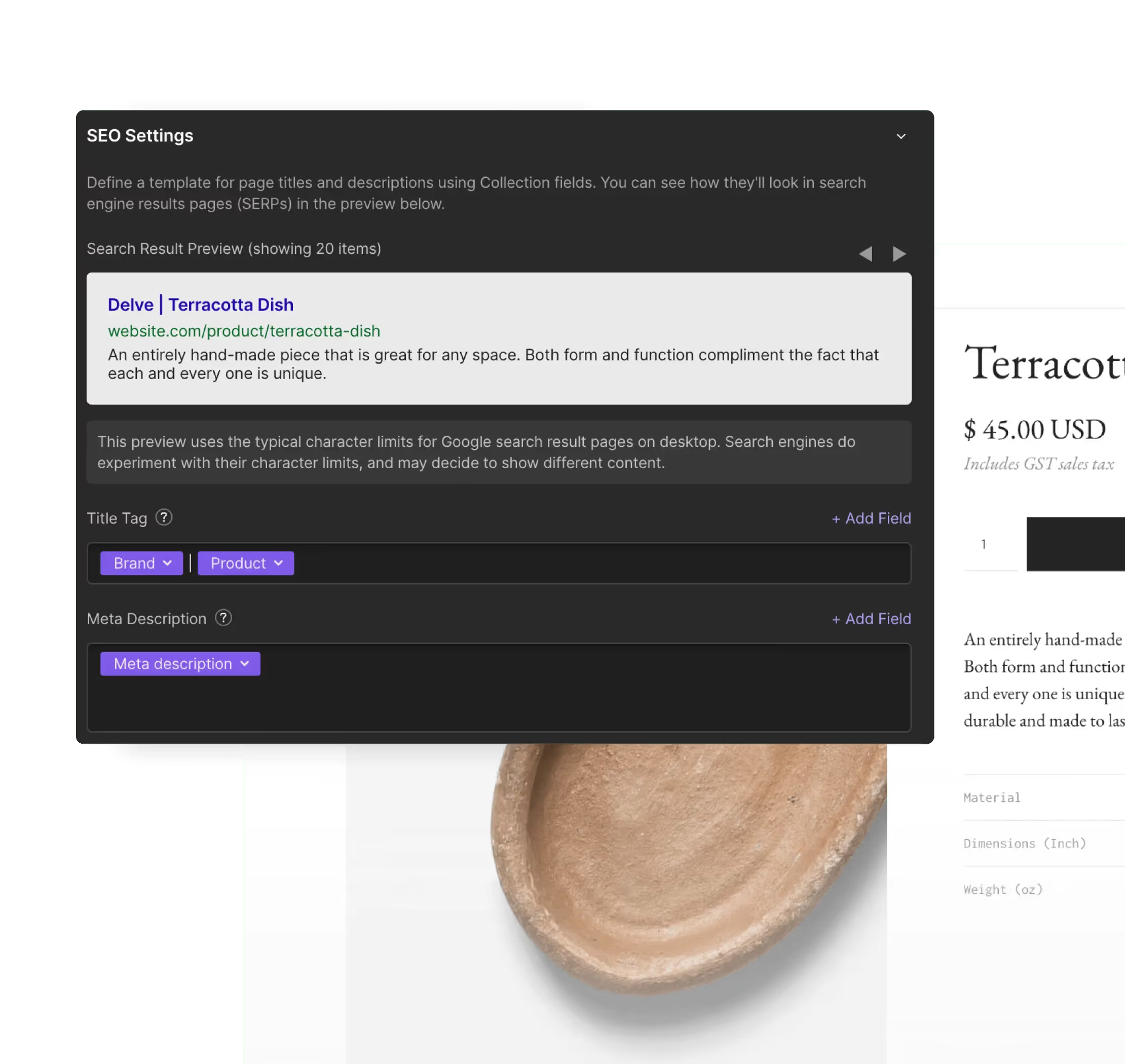In 2025, SEO is more competitive than ever. Businesses are looking for reliable, fast, and flexible solutions to stand out in search results. Webflow is a modern alternative to traditional CMS, combining technical performance, design freedom and native SEO optimizations.
Whether you are an SME, a growing startup or a national brand, Webflow can become a strategic asset to improve your natural referencing.
Webflow's native SEO assets
Full control over tags and meta data
With Webflow, you keep control of all the key elements of on-page SEO:
- Tags Title and Meta description customizable page by page.
- Clean and optimized URLs for your keywords.
- Tags alt on images to improve accessibility and Google Images SEO.
- File Management robots.txt And 301 redirects directly from the interface.
This total control allows you to work with precise expressions such as “Webflow Poitiers agency” or “Webflow SEO site creation” and to effectively target your audience.

Clean and optimized code structure
The code generated by Webflow is clear, lightweight and respects W3C standards.
Unlike some CMS overloaded with plugins, Webflow eliminates the superfluous and facilitates quick indexing by Google.
An optimized HTML structure is essential for:
- Get better scores on Google Lighthouse.
- Improve the Crawl Budget from Google.
- Reduce the risk of indexing errors.
Webflow and loading speed: a key SEO advantage
Loading speed is a determining factor for natural referencing and the user experience.
By default, Webflow offers several technical optimizations:
- Global CDN to broadcast your pages from the server closest to the user.
- Automatic compression Images in WebP.
- Lazy loading built-in to delay the loading of media that is not visible.
- Minification HTML, CSS, and JavaScript code.
Performance and Core Web Vitals
Les Core Web Vitals — LCP (Largest Contentful Paint), FID (First Input Delay), and CLS (Cumulative Layout Shift) — are now integrated into the Google ranking criteria.
Webflow makes it easy to reach high scores, improving both your SEO and the satisfaction of your visitors.
UX/UI flexibility and impact on SEO
A well-designed site is not limited to keywords. UX (user experience) and design directly influence visitor behavior and therefore your SEO.
UX design and conversion rate
Webflow allows you to create custom interfaces that:
- Guide the user to important actions (contact, purchase, registration).
- Improve the time spent on the site, a positive signal for Google.
- Reduce the bounce rate thanks to smooth and intuitive navigation.
Responsive design
In 2025, Google primarily indexes the mobile version of a site (mobile-first indexing). Webflow makes it easy to create optimized responsive versions, regardless of the device used.
Webflow vs WordPress: who is winning the SEO battle in 2025?
Here is a quick comparison of the two platforms on key aspects of SEO:
Conclusion — Why 2025 is the Webflow year for your SEO
If you are looking for a modern, fast, secure CMS designed for SEO, Webflow is a strategic choice in 2025.
You benefit from a tool All-In-One that combines performance, custom design and advanced SEO control, without worrying about technical maintenance.
Ready to boost your SEO with Webflow (and Norry)?
👉 Request a free SEO audit to find out how to optimize your site and attract more qualified customers, locally and nationally.


